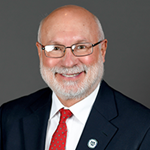“Education for Citizenship” is the motto of the university where I teach. In my opinion, it should be part of the mission of every public school in America.
In educating the next generation of leaders, we should teach students rigorous analytical skills and help them develop an understanding of our government and legal process. We should enhance their judgment through a dynamic and innovative learning environment with the goal that they become outstanding citizens and leaders equipped to aid and improve society.
We cannot accomplish any of those things until we recognize—and teach our students to recognize—institutional and structural racism in our laws, our social constructs, our economic policies and practices, and our political postures.
Some students come to school knowledgeable about institutional and structural racism; others do not. It is our obligation—our duty—to ensure that before students become voters, advocates, leaders, or problem-solvers, they have a real and nuanced understanding of both institutional and structural racism.
While some schools have taken on that task, more schools need to do so, especially schools that are highly segregated and mostly white.
We need to educate our students to see where change is needed and how that change might be accomplished. We need to expand their ability and resilience in advocating for those changes and help them to understand that they can do so regardless of political ideology or party affiliation.
It is time for critical listening, difficult conversations, hard work, and change.
How can we accomplish this mission?
As school board members, we are uniquely positioned to identify areas in need of systemic change or reform.
We can provide resources and invest in expanding our teachers’ knowledge of institutional and structural racism in their areas of pedagogy and research.
Most importantly, however, we school board members must refrain from closing our eyes, our minds, and our hearts to the daily pain and struggle of others—no matter how “other” is defined.
As school leaders, each of us has an impact on students’ readiness to become engaged citizens and whether they are silent or become strong voices in their community.
Have we learned to listen, not just hear, others when they speak? Have we learned to recognize when our silence, or the silence of others, speaks volumes? Have we learned that to understand another person, we must seek to see things through interpretive lenses other than our own?
Are we helping our students learn to do the same? Are we so sure that we are “right” that we have stopped even considering someone else’s world view? What are we modeling for our students?
Are we comfortable encountering viewpoints different from our own?
As school board members, we must engage in conversations with careful forethought. We need to talk about issues of subordination, of institutional or structural racism, sexism, classism, genderism, ageism, or any other type of “isms” that do not improve the lives of individuals or the well-being of our society.
Remember, also, our students should not hear only one voice, one opinion, or one viewpoint.
Do I do all these things now? No. Do I expect you to do all these things all the time? No. I am, however, committing to do more. I hope that you will as well. Our students and our communities are depending on us.


Share this content